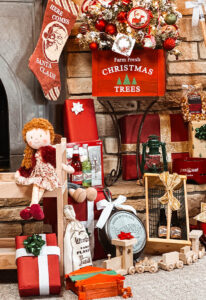
Homeowners who heat with wood can be divided into two groups: those who need to get outside this time of year and cut wood for next winter, and those who need to get outside right now and cut wood for this heating season. In the early years I often found myself counted among the latter. Nowadays I try to be better prepared.
Either way, when you head to the woodlot it pays to have a properly maintained saw, the necessary safety equipment and gear, and the know-how to stay safe. You’ll want a good-running saw of ample size to get the work done, the hand tools to keep it cutting well, and some rugged and safe clothing and safety gear.
First, let’s start with a checklist of needs (and a few wants that can make the job easier and safer).
Traditional, Non-Machine Felling
Two-man saw/crosscut saw or bucksaw (if you aren’t using a chainsaw)
The type of saw needed is determined by the work you’ll be doing. Felling is best with a two-man saw; limbing can also be done with a two-man. Use cross-cut or bucksaws when trimming smaller limbs for kindling too.
Chainsaw Felling
Chainsaw
Chain file with handle
Chainsaw tool (to adjust bar)
Fuel/oil mix (check your saw’s owner’s manual for the correct proportions)
Bar and chain oilBasic safety gear
Well-fitting leather work gloves
Eye protection
Hearing protection (if using chainsaw)
Good work boots
Optional, especially if using non-machine felling methods. Good ideas if using chainsaw:
Face shield and hard hat combo
Quality pair of woodcutter’s safety chaps.
Never Cut Wood Solo
Over the years I’ve cut wood with several different people. Sometimes one of us was working for pay or shares of the day’s harvest. Many times we were cutting for the benefit of one person with the others just being neighborly and helping out. While I’ve cut wood alone many days it’s not a task I suggest tackling solo.
Over the years I’ve had several relatives and friends suffer potentially serious accidents courtesy of a chainsaw. In a couple instances, the outcome may have been disastrous if the woodcutter had been working alone. I strongly suggest the following items be part of a day in the woods.
Better Safe Than Sorry List
First aid kit
Some communication device (cellphone if appropriate, or two-way radios shared with a working partner)
Water jug
Lunch or at least a snack
A plan (notes on where you’ll be cutting and when you should arrive back) left with a family member or friend.
Cutting and splitting a load of firewood usually involves either felling and cutting up whole trees, cutting up storm-damaged timber, or working up tops or cull logs left behind after a commercial logging operation.

Sharpen manual saws. A sharp saw will work through the wood more easily, and lessen the chance of binding or kickback. The Crosscut Saw Manual will take you through the sharpening process, step-by-step.
If you’re using a chainsaw, before you head to the woodlot or log pile make sure your chainsaw is operating at its peak.
If it’s not running properly, take the saw to a qualified small engine shop and get it tuned up or repaired. An ill-running saw can be both annoying and dangerous. The saw should start with ease and idle slow enough to allow the chain clutch to slip and the rotation to stop while running but not in use. Be sure the chain brake is operational, because the first time your forward hand accidentally slips from the handle and moves toward the blade you’ll want that brake to snap into duty to both lock the chain and prevent your knuckles from coming into contact with the razor-sharp teeth.
Once you know the saw’s engine and safety systems are top-notch, you’ll want to have the chain sharp. The rows of opposing teeth are usually sharpened on a 30- to 45-degree angle. Each cutting link also contains a depth gauge and is separated by drive links. The cutting tooth takes a bite out of the wood, with the size of the bite determined by the height of the depth gauge portion of the link. The drive links are turned by the saw’s drive gear and ride in the groove in the bar to keep the chain aligned. Getting the saw to cut straight is done by having the chain uniformly sharp.
Saw shops and professional loggers will use an electric chain sharpener to quickly make all cutting teeth, or cutters, sharp. The small sharpeners are inexpensive, starting at about $35 for a low-end but suitable machine. The chain is fed through the machine and stopped at each cutter. As the rotating grinding disc is lowered the chain is locked in place. Once the disc dresses the face of the cutter the chain is advanced to the next tooth and the process is repeated. Check out the Homeowner’s Complete Guide to the Chainsaw for an in-depth discussion of this process.
While cutting wood you’ll need to redress the cutting teeth with a chain file. (The Homeowner’s Complete Guide to the Chainsaw covers this too!) There’s no hard rule of when to resharpen, although some people say to sharpen the chain each time you fill the gas tank. I sharpen the chain every time I notice the saw not cutting as it should, or if I accidentally nick a rock or cut into a foreign object buried in the log or limb.

Two other handy references are The Backyard Lumberjack Book, or the small Axes and Chainsaws: Use and Maintenance Book. (I also like the Heating with Wood DVD set available at Lehman’s. It that covers every aspect of cutting firewood and maintaining the necessary tools.)
Never operate a chainsaw without eye protection
The hundreds of dollars you can save from cutting your own heating wood for a winter won’t cover the medical bills you can rack up with an eye injury.
Get in the habit of keeping all your chainsaw accessories, including safety glasses or face mask, gloves and safety chaps, bar adjustment tool, chain files and extra 2-cycle and bar oil together in a dedicated storage box. Mine is a homemade wooden toolbox I haul on the rear rack of my 4-wheeler.
In closing, let me suggest a short list of other items you might want to consider to make a day of cutting firewood more efficient and enjoyable. The list includes:

Skidding tongs (to drag logs)
Cant hook or peavey (to roll and maneuver logs)
Log carrier or claw (for handling heavy wood billets)
Log jack (to get logs up off the ground for ease of cutting and longevity of a sharpened chain)
Splitting maul or powered log splitter
Splitting wedge(s)
Hatchet or bow saw/bucksaw
While it sounds strange to some folks, a portion of us enjoy cutting and splitting firewood. I find the days spent gathering my next winter’s wood both relaxing and rewarding. I like the feel of a good running chainsaw in my hands and at my control, and the sight of long curls of wood falling victim to a freshly-sharpened chain. Driving home with the bed of my truck rounded over with cut and split wood at the end of the day makes me both proud and glad to know I’m providing for my family. And because of attention to the guidelines we just discussed, I’m going home safe and healthy.




























